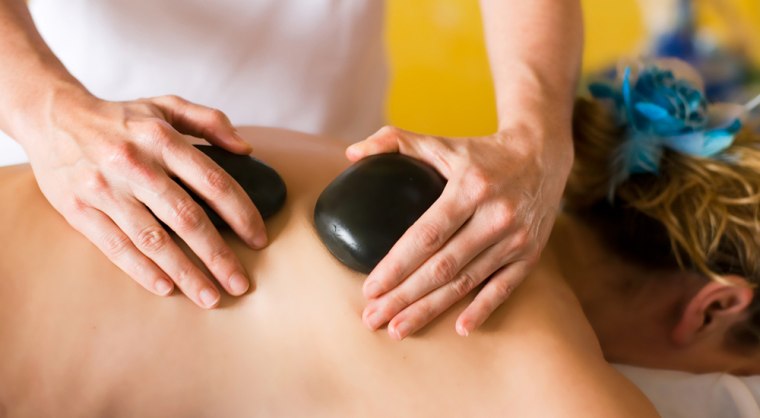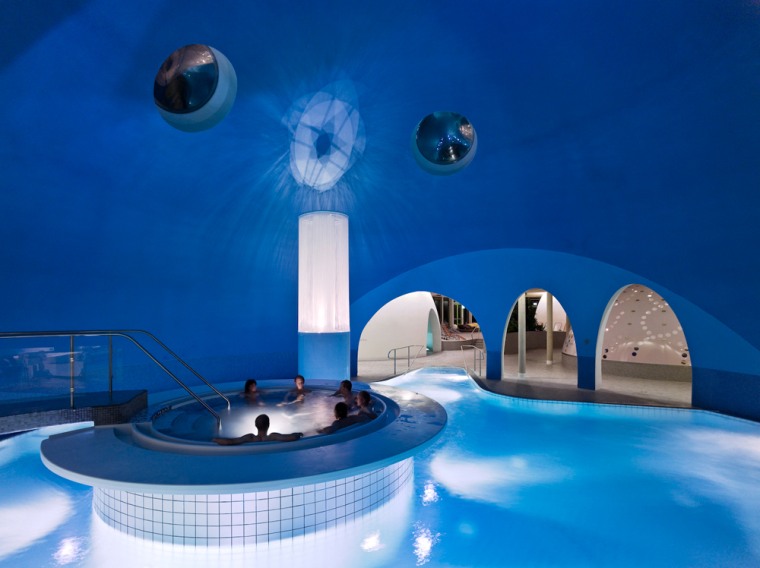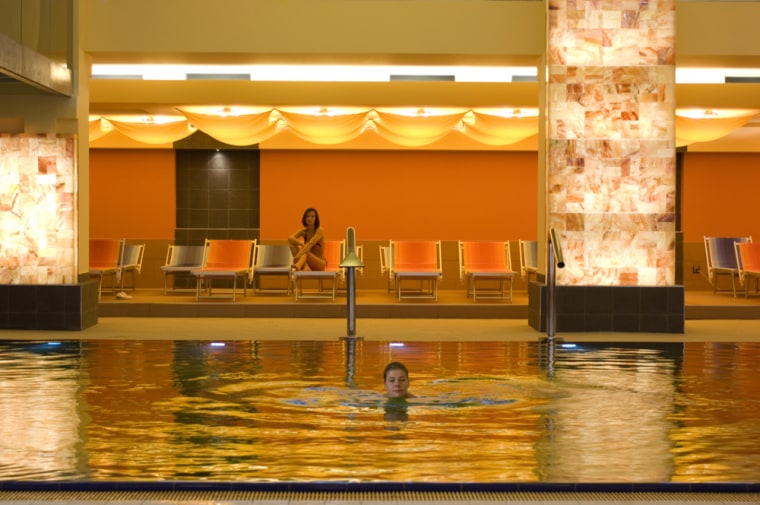“So this is how it must have been during Roman times,” whispers my girlfriend, Anna, as we luxuriate in hedonistic bare bliss on the floor of one of four shallow pools, arranged under an ornate russet-colored dome and columned amphitheater, in Friedrichsbad: the world-famous Roman-Irish bath in the Black Forest Eden of Baden Baden.
Like most pleasure-seeking sybarites, we’ve made the trip to the southwestern part of Germany to enjoy the centuries-old healing power of the thermal or mineral waters, which sprout out in more than a handful of Kurorte (health resorts) throughout the region—almost all of them with a name consisting of the German word for bath (bad).
Baden Baden is perhaps Europe’s most famous—its double-barreled name boldly announces that it is the Baden of the province of Baden-Württemberg, which hugs the French border and stretches south to Switzerland. It was made famous in the 1800s by Russian royalty, aristocrats and literati, who, with their courtesans and aide de camps in tow, made the monumental month-long journey south.
And while you no longer will find the likes of Dostoyevsky, Gogol or Turgenev losing their fortunes at the tables of the famed rococo casino which Marlene Dietrich proclaimed as ''the most beautiful in the world” or the likes of Queen Victoria and Czar Alexander I, the grandson of Catherine the Great or Victor Hugo strolling about, you will come across deposed heads-of-state, retired millionaires and inconspicuous nobles perusing the superswanky vitrines, when they’re not lounging about in their second homes—stacked one on top of another on the hillsides.
This moneyed aristocratic air, furthered by head-turning vehicles, jewels and furs that are right out of a James Bond movie, thankfully hasn’t discouraged mere mortals from taking part in the spiritual pilgrimage to the sulphurous baths. In fact, we made the journey from London on the hoi polloi express, Ryanair, which flies, conveniently, to an airport just 10-minutes from the city-center. What’s more, the first of the city’s two thermal baths, the state-of-the-art Caracalla-Therme located on the Römerplatz (for the Roman legionnaires who founded the city 2000 years ago), is designed for families and the masses with its complex of seven indoor and outdoor pools, whirlpools, steam baths, waterfalls, fountains, solariums and no less than eight adult-only (and nudist) saunas, including a trio of rustic outdoor cabins, one with an atmospheric roaring fireplace, located in an adjacent wooded hillside.
The more traditional offering, and the one we choose as we tried to unlock the curative mystery of “taking the waters”, is the 120-year old adults-only Friedrichsbad, which is an entirely hush-hush and, depending on the day of the week, an all-nude affair. On one such day, we separated into our respective changing rooms, where we stripped and then proceeded on our own through a nearly four-hour detoxification and renewal ritual that can be best described as hypnotic.
In fact, according to Pam Price, co-author of 100 Best Spas of the World and a respected spa consultant, it is this ethos that distinguishes spas in the U.S. from those in Europe. "Americans have always been known for their focus on fitness, with massive gym complexes and such, whereas Europeans traditionally centered their spa experience on the restorative powers of water and subsequent healing for various ailments. From rheumatism to arthritis, the waters serve not just for relaxation but play a physical therapy role as well."
Indeed, while we were part of the entirely young and healthy clique, of which there were more than a handful, there were a good number of well-heeled octogenarians making use of the facilities, a fact that Price says is not uncommon. "Traditionally, Europeans would go to thermal springs for three weeks at a time and this kind of European spa culture still exists.”

It’s not just Baden Baden that offers revitalization, invigoration and even healing in geothermal waters. Whether you’re headed to Iceland, Budapest, the Swiss Alps, the Dolomites, the Czech Republic or, aptly, the town of Spa in Belgium or Bath in England, all of them en fete at the moment, there is a thermal experience in waiting. And while many are traditional old haunts, a handful have recently been invigorated anew by world-renowned architects, including Matteo Thun’s Therme Meran in South Tyrol and the just-opened Therme Bad Aibling , whose swish new look by the Stuttgart-based design firm of Behnisch Architekten is meant to evoke the hot spring bubbles for which the town, located 35 miles southeast of Munich, is known.
"A hot spring has healing qualities because of the minerals in the water. This isn't drinking water, but water that bubbles up at temperatures in excess of 100 degrees,” says Price. “Most thermal spas in Europe have accredited spa physicians on hand who will give you a vacation prescription for treatments you'll be required to take every day and then monitor your healing process.” Yet “taking to the waters” isn’t just an experience reserved for those blessed with access to thermal springs. Along the Mediterranean and the Atlantic coasts, seawater is pumped into the pools of shore-side spas and heated. Called thalassotherapy, it is thought that micro-organisms, everything from magnesium and potassium to calcium sulphates and sodium, which are found in seawater and then absorbed through the skin via an osmosis effect, have therapeutic properties. “In Europe, the spa experience can be as much about healing as pampering, if not more so," says Price of the feel-good results.

The first two hours of our pampering procedure began by moving, at specific timed intervals, from a hot shower, to a pair of warm air baths (129 and 154 degrees, respectively) before arriving at a slightly disconcerting station where, professionals of the same sex who are dressed in lab coats, administer an invigorating (to put it mildly) soap and brush scrub down-cum-massage. From here, it’s onward to a two-stage thermal dampfbad or steam bath (the first at 113-degrees and the latter at 119-degrees) before joining your partner, who is naked for all to see (not ideal for those self-doubting days), for a trip through four lukewarm pools. The last part of the rite consists of more steam, another long hot thermal shower, a refreshing (and highly recommended) cold water dip and then a 30-minute nap, which the dip induces almost instantly, in a vaulted circular space where stretcher-type beds with heated sheets are provided.
It was nearly 40 minutes after I had completed my recuperative therapy before Anna finally emerged. “I lost track of time,” she said sheepishly, unwittingly echoing Mark Twain’s famous comments after visiting the Friedrichsbad that, “after 10 minutes you forget time; after 20 minutes the world”. Now I know what he—and those Romans—were on about.
